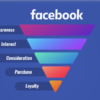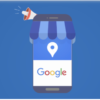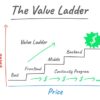Email Marketing
Customer Acquisition Retention Strategies You Need to Know
In the fast-paced world of small business, capturing and holding onto customers is akin to winning their hearts. While customer acquisition is about getting people to notice and choose your brand, customer retention is about convincing them to stick around. Both are crucial, yet many businesses often lean too heavily on the former. This post dives into the art of balancing both strategies effectively and introduces you to a blend of innovative tactics that hold the promise of elevating your business growth.
In this article, expect insights on why acquisition and retention are two sides of the same coin and a breakdown of seven proven strategies—three focused on bringing in new customers and four on keeping them engaged. Get ready to explore practical, actionable tips tailored for small business owners, marketing managers, and startups eager to expand their reach and solidify their customer base.
Customer Acquisition vs. Customer Retention
Understanding the distinct roles of customer acquisition and retention is critical. Acquisition involves attracting new customers, which can be costly but necessary for growth. Retention, however, focuses on maintaining relationships with existing customers, often at a lower cost. Striking a balance between these two approaches is vital for sustained business success.
While acquisition can lead to immediate revenue boosts, retention offers long-term benefits, including increased customer lifetime value and brand loyalty. Research indicates that increasing retention rates by just 5% can boost profits by 25% to 95%. Thus, integrating both strategies ensures a robust and resilient business model.
For small businesses, this dual focus ensures they don’t just survive but thrive. By understanding the lifecycle of a customer, businesses can tailor their strategies to maximize engagement and satisfaction at every touchpoint, ensuring a holistic approach to growth.
Customer Acquisition Strategy #1: Working for Free
Offering something for free seems counterintuitive in business, yet it’s a powerful acquisition tactic. It builds goodwill and showcases your value without any initial commitment from the customer. Free trials, samples, or consultations allow potential customers to experience your product or service firsthand.
This strategy reduces perceived risk and encourages trial, especially if your product or service is relatively new or unknown. Once customers experience the value, they’re more likely to convert into paying customers. Think of it as an opportunity to prove your worth and build trust.
However, it’s essential to set boundaries to ensure this strategy doesn’t hurt your bottom line. Clear limits on duration or scope can help manage expectations and maintain perceived value.
Customer Acquisition Strategy #2: Cold Email
Cold emailing remains a formidable tool for reaching potential customers directly and personally. It allows for targeted communication, letting you introduce your product or service to a specific audience segment. The key lies in crafting a compelling subject line and personalized message that speaks to the recipient’s needs or pain points.
A successful cold email strategy requires research. Understanding your target audience enables you to tailor each email, making it relevant and valuable. Your message should focus on solving a problem or offering a benefit, prompting the recipient to take action.
Tracking responses and adjusting your approach based on feedback is crucial. Over time, refining your messaging and targeting capabilities increases effectiveness, making cold email a cost-efficient acquisition tool.
Customer Acquisition Strategy #3: Sales Funnels
Sales funnels guide potential customers through a structured process, from awareness to purchase. They are designed to capture interest, nurture leads, and convert them into buyers. By creating a clear pathway, you ensure that no potential customer falls through the cracks.
The funnel begins with attracting attention through various channels, such as social media, ads, or content marketing. Once a lead enters the funnel, nurturing techniques—like informative emails or tailored offers—encourage engagement and move them toward a purchase decision.
Analyzing funnel performance is crucial. Metrics such as conversion rates and drop-off points help refine the process, ensuring it remains efficient and effective. A well-crafted sales funnel not only acquires customers but also enhances their experience, setting the stage for retention.
Customer Retention Strategy #1: Improve Your Product or Service
Continuous improvement of your product or service keeps customers satisfied and engaged. Listening to feedback helps identify areas for enhancement, allowing you to meet evolving customer needs and expectations. It demonstrates your commitment to delivering value.
Innovation plays a key role here. By staying ahead of trends and incorporating new features or improvements, you keep your offering relevant and competitive. This proactive approach signals to customers that you’re dedicated to providing the best possible experience.
Regular updates or enhancements can also serve as touchpoints to re-engage customers, reminding them of the unique value you offer and reinforcing their decision to stick with your brand.
Customer Retention Strategy #2: Create a Subscription Offer
Subscription models provide ongoing value and convenience for customers, fostering loyalty and long-term engagement. They offer predictable revenue streams and enhance customer relationships by ensuring continuous interaction with your brand.
To create a successful subscription offer, focus on delivering consistent value that meets customer needs. Whether it’s a monthly product delivery, exclusive content, or access to special events, the offering should align with customer preferences and interests.
Regular communication with subscribers is essential to maintain engagement. Updates, personalized recommendations, and exclusive promotions keep subscribers excited about your brand and reinforce their commitment.
Customer Retention Strategy #3: Celebrate Customer Wins
Acknowledging customer achievements or milestones strengthens your relationship with them. It shows you care about their success, not just their business. Celebrations can take many forms, from personalized congratulatory messages to tangible rewards or discounts.
This strategy fosters an emotional connection, transforming customers into brand advocates. They feel valued and appreciated, enhancing loyalty and encouraging positive word-of-mouth referrals.
Utilize customer data to personalize these interactions. Recognizing birthdays, anniversaries, or usage milestones with tailored messages or gifts can significantly impact retention and satisfaction.
Bonus Customer Acquisition and Retention Strategy: Start a Weekly Email Newsletter
A weekly email newsletter serves both acquisition and retention purposes by providing regular, valuable content to your audience. It keeps your brand top-of-mind, nurtures leads, and reinforces relationships with current customers.
Crafting engaging and informative content is key. Share industry insights, company news, and exclusive offers to captivate your audience. Encourage interaction by inviting feedback or questions, fostering a sense of community.
Consistency is crucial. Regular newsletters establish a reliable communication channel, building trust and anticipation. An effective newsletter strategy not only attracts new customers but also strengthens ties with existing ones.
Learn to Acquire Customers With Sales Funnels!
Sales funnels are a powerful acquisition tool, guiding prospects through a structured path to purchase. By systematically capturing interest, nurturing leads, and facilitating conversions, they streamline the customer acquisition process.
Begin by understanding your target audience and crafting content that resonates with them at each funnel stage. Clear calls-to-action (CTAs) prompt desired behaviors while tracking metrics provides insights for optimization.
A well-designed sales funnel not only boosts acquisition but also enhances customer experience. By aligning your funnel with customer needs and preferences, you lay the foundation for lasting relationships and business growth.
Conclusion
Balancing customer acquisition and retention is essential for sustainable business success. By implementing a mix of strategies tailored to both goals, you create a comprehensive approach that drives growth and strengthens customer relationships. Remember, happy customers are the key to enduring success. Explore these strategies, adapt them to your business, and watch as your brand thrives. For further resources or personalized guidance, consider reaching out to industry experts or joining a community of like-minded professionals passionate about business growth.
>>>Join The One Funnel Away Challenge<<<






























